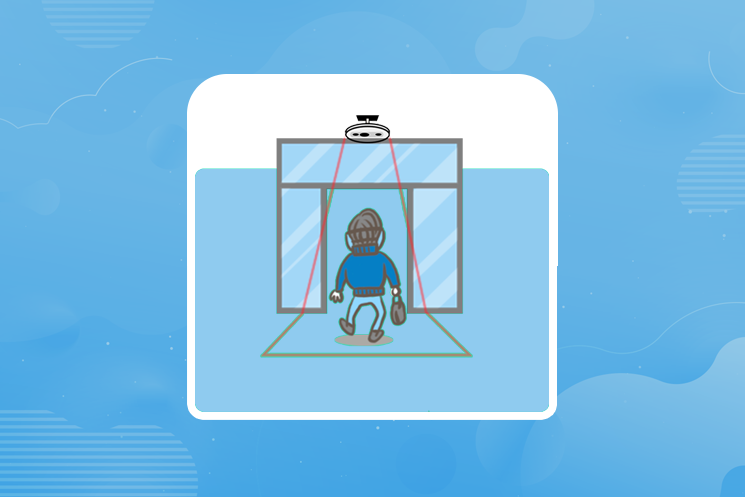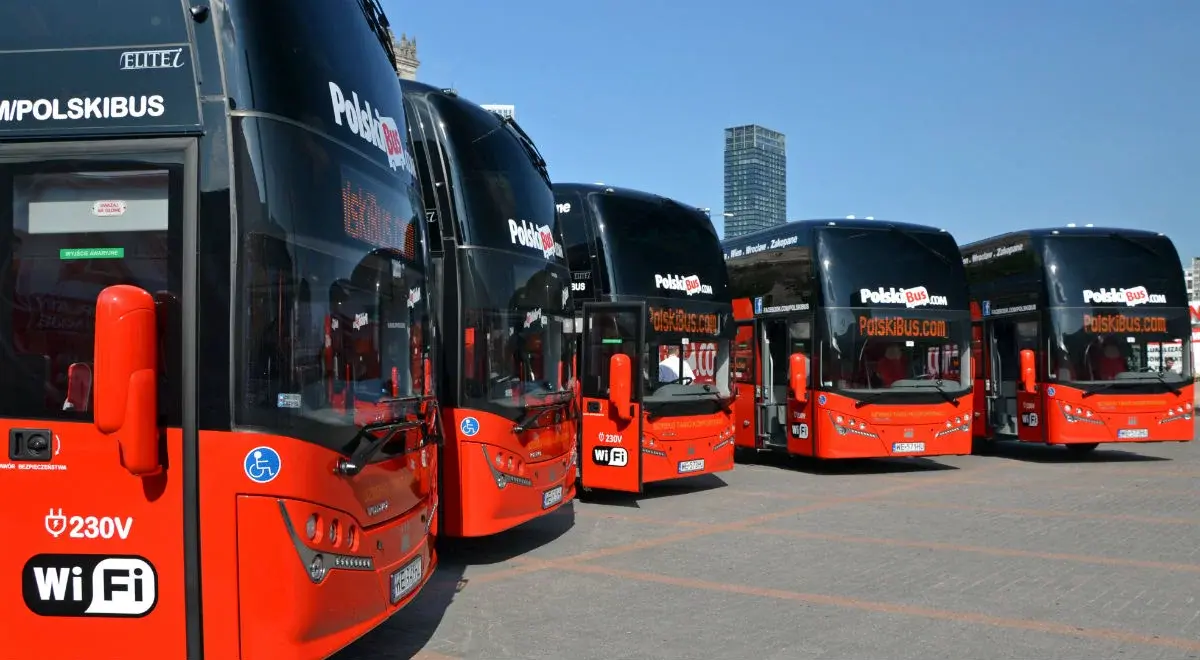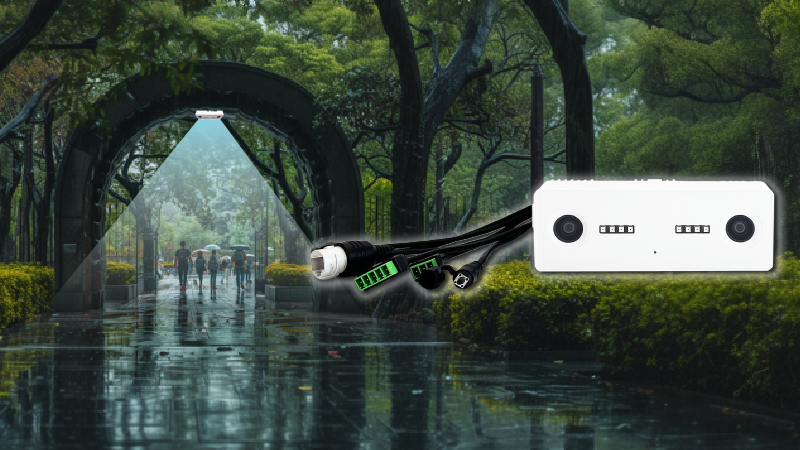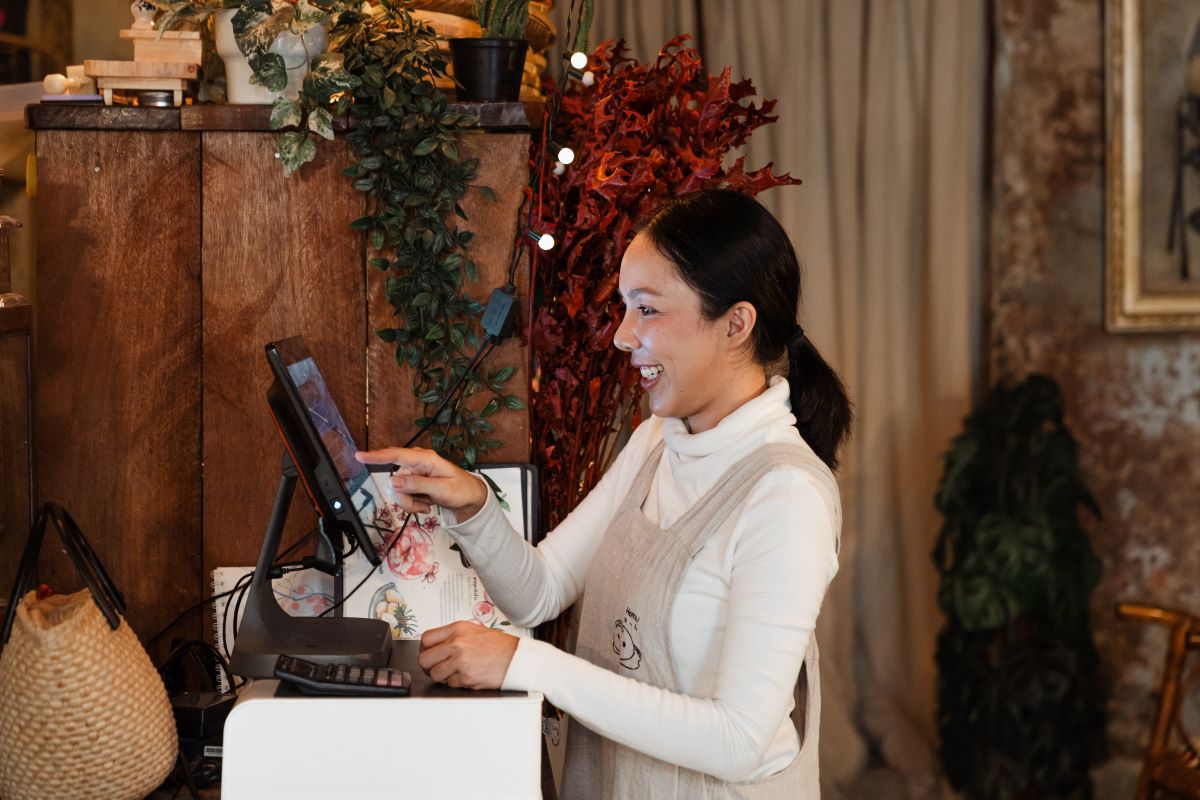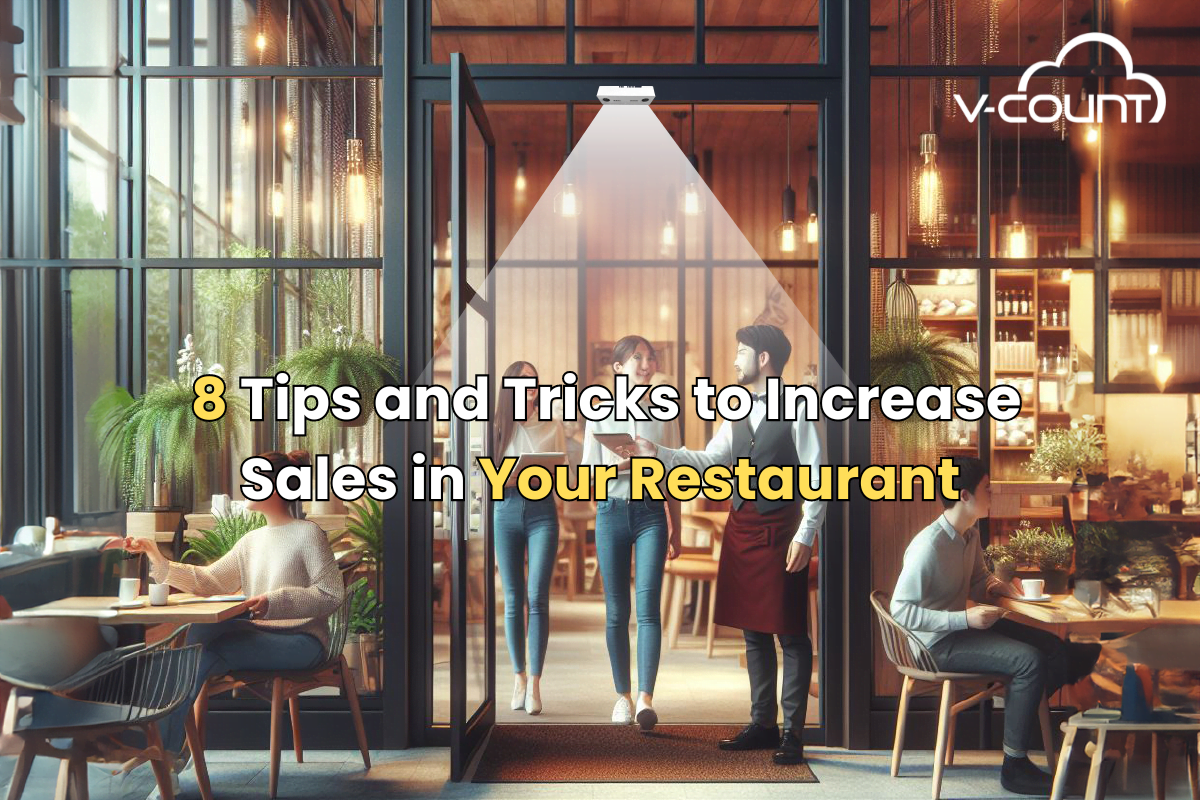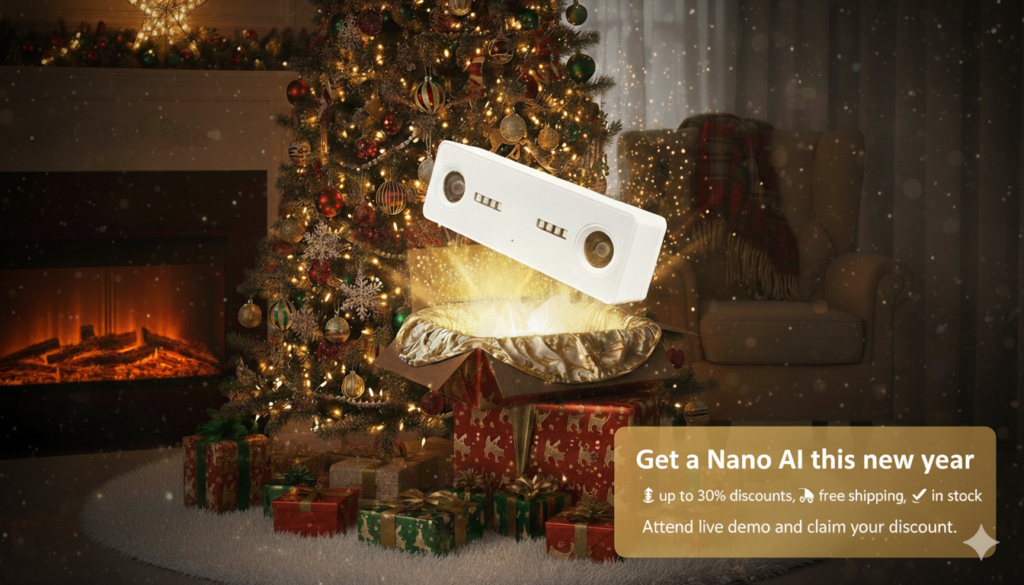The need for reliable and accurate people counting technologies for physical businesses is now more critical than ever. In retail, for example, various technological solutions are implemented to ensure that stores’ operations run as smoothly and efficiently as possible. The technology that goes into business operations is vastly versatile and covers every aspect; from security cameras and POS systems to safety alarms and smart locks, you get all of the flexibility you need to analyze your business operations inside and out.
V-Count’s Latest People Counting Solutions: Nano, Nano Outdoor, Nano Prime, and BoostBI
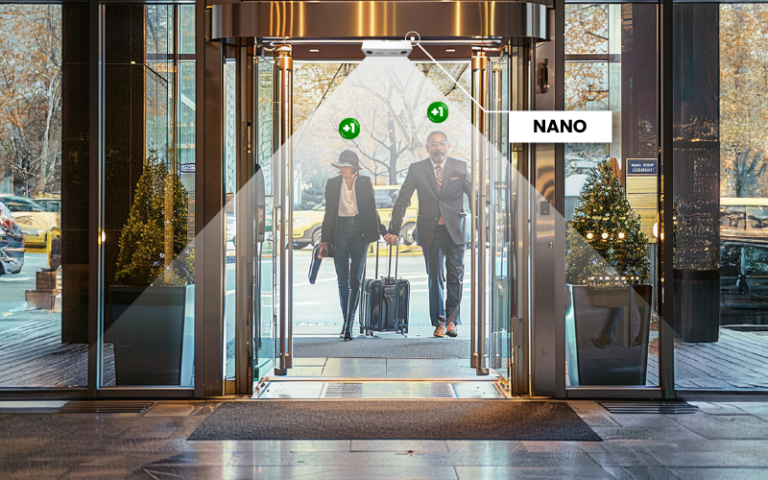
V-Count’s latest suite of people counting products—Nano, Nano Outdoor, Nano Prime, and BoostBI—leverages advanced 3D active stereo vision and AI-on-chip technology to deliver up to 99% accuracy, GDPR-compliant data processing, and seamless integration for businesses worldwide. Below is a detailed overview of each product, designed to meet diverse indoor, outdoor, and analytical needs.
Nano: The Eco-Friendly Indoor People Counter
Nano is a compact, plug-and-play sensor designed for indoor environments, offering high accuracy and sustainability.
- 99% Accuracy: Utilizes 3D active stereo vision and AI tracking algorithms to count visitors precisely, even in complete darkness (0 Lux).
- Plug-and-Play Installation: Sets up in under 5 minutes with USB-C power and Wi-Fi connectivity up to 40 meters.
- Eco-Friendly Design: Battery-free, powered via USB-C at 5V, minimizing environmental impact.
- Staff Exclusion: Excludes employees from counts for accurate visitor data (introduced Q1 2024).
- Queue Management: Monitors queues at cashiers or self-service stations, reducing wait times and cart abandonment.
- GDPR Compliance: Processes data on-device with AI-on-chip technology, ensuring privacy.
Applications: Ideal for retail, supermarkets, libraries, and banks, Nano optimizes staffing, reduces energy costs, and boosts conversions.
Nano Outdoor: The World’s First Outdoor People Counter
Nano Outdoor is a durable, waterproof sensor built for outdoor environments, maintaining high accuracy in extreme conditions.
- Extreme Durability: Operates in temperatures from -25°C to +60°C, with IP65 waterproofing to withstand rain, snow, and sandstorms.
- Night Vision: Counts accurately in total darkness using active infrared lighting.
- Plug-and-Play Setup: Installs easily with USB-C power and Wi-Fi, eliminating cabling costs.
- Eco-Friendly: Battery-free operation reduces environmental footprint.
- Customizable: Tailored to specific business needs for optimal outdoor performance.
Applications: Perfect for outdoor retail, plazas, parks, and event venues, providing real-time occupancy data for safety and efficiency.
Nano Prime: Advanced In-Store Analytics
Nano Prime specializes in heatmap and zone analytics, offering insights into customer behavior and store performance.
- Heatmap Analytics: Generates dwell-time projections to identify high- and low-traffic areas.
- Zone Analytics: Tracks visitor flow across store zones, covering up to 120 square meters from a 4.5-meter height.
- High Resolution: Uses a unique grid system for detailed analysis of small sections.
- API Integration: Connects seamlessly with POS systems for streamlined workflows.
- 99% Accuracy: Employs 3D stereo vision for precise counting and behavior tracking.
Applications: Retailers use Nano Prime to optimize store layouts, product placement, and pricing, enhancing customer engagement.
BoostBI: The Visitor Analytics Platform
BoostBI is V-Count’s powerful analytics platform, transforming foot traffic data into actionable insights via a user-friendly dashboard and mobile app.
- Real-Time Insights: Tracks foot traffic, occupancy, and performance metrics instantly.
- Comprehensive Dashboards: Monitors KPIs like conversion rates and dwell times across multiple locations.
- Mobile Access: Offers remote management through iOS and Android apps.
- API Integration: Connects with POS and other systems for operational efficiency.
- Multilingual Support: Available in 19 languages for global use.
- Sales Coach: Provides smart recommendations to optimize revenue.
Applications: BoostBI helps businesses reduce costs, refine marketing, and improve operations, with clients reporting significant revenue growth.
The Importance of Using People Counters
As consumer behavior shifts due to the pandemic, retail stores are looking for ways to optimize their conversion rates. In order to do so, businesses need to gain insights into their visitor data to understand shopping behavior – this is where people counters, or people counting sensors, come into play.
Visitor counters provide actionable foot traffic data to help managers make smart business decisions. The sensors can be used in different industries like retail, shopping malls, supermarkets, hotels, casinos, airports, libraries, schools or universities, gas stations, banks, museums, theme parks, or any other business with a physical location.
Which People Counting Technology Is Right for Your Business?
While people counters are relatively simple, it can get overwhelming as there are many options out there to choose from.
Beam Counters /Infrared People Counters
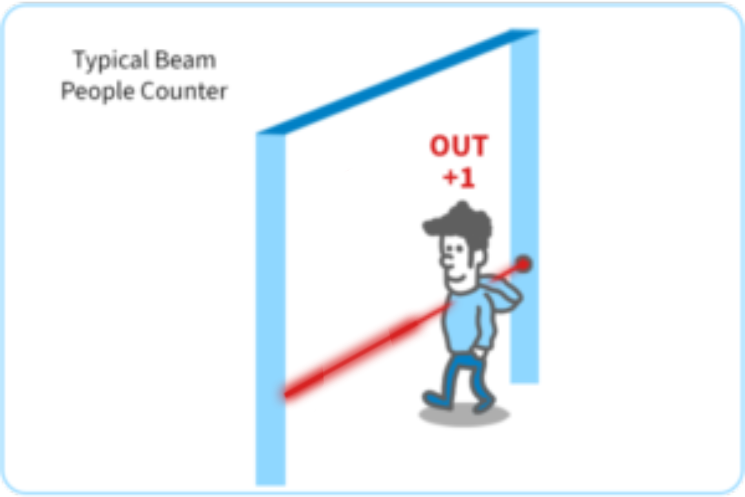
Beam counter sensors – also known as infrared beam counters, infrared footfall counters, or IR people counters – consist of receiver and transmitter units installed side by side at the entrances. When the transmission signal is blocked due to an object obstruction, a count occurs.
Beam sensors have some downsides; For example, they don’t provide in & out numbers separately since they have no sense of direction. Also, beam counter sensors aren’t the most accurate since side-by-side objects are counted as one, and the accuracy decreases as the door width increases. Modern beam counters have improved slightly with basic filtering algorithms, but they still struggle with distinguishing non-human objects like shopping carts or baby carriages.
The verdict: While beam counters are a less expensive option that’s easy to install, the beam range is limited and provides inaccurate results, especially for wider entrances or high-traffic areas.
CCTV People Counting
CCTV cameras (closed-circuit television cameras) can be used to track people’s movements by connecting the camera to a people counter algorithm that can detect and record how many people pass through the counting zone. Wide entrances and areas are handled by linking several cameras across the ceiling.
CCTV cameras are not designed for people counting solutions, this causes limitations and results in inefficient monitoring and low accuracy. While AI-enhanced algorithms have improved detection in recent years, the technology remains susceptible to errors from object obstructions, shadows, or moving objects like baby carriages. Additionally, CCTV systems raise privacy concerns, requiring GDPR-compliant processing to avoid legal issues.
The verdict: Since CCTV cameras are not designed to count people, accuracy is low compared to dedicated sensors. Multiple cameras are needed to be installed at different angles to cover wider entrances, making the cost for the CCTV option higher.
Thermal Counters
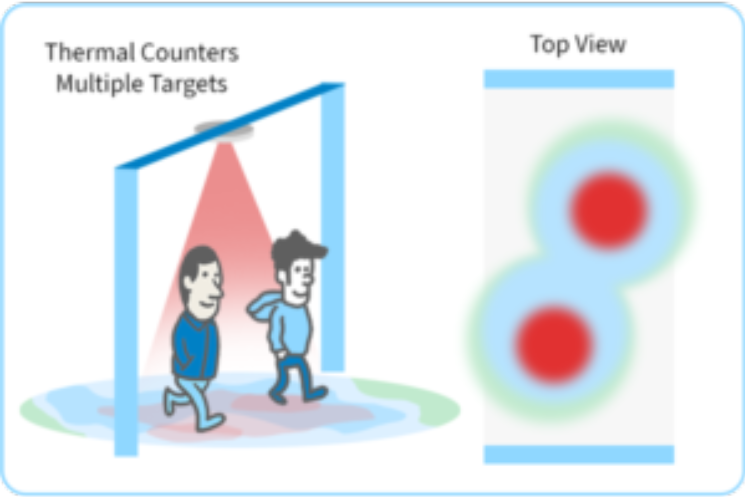
Thermal counters use a person’s body heat to measure footfall traffic. They create images using infrared radiation the same way a typical camera forms an image using visible light. Thermal sensors are installed top-down at the entrances to detect human body temperatures and count them.
Typically, thermal imaging people counters are negatively affected by sunlight since sunlight radiates the whole light spectrum. Crowded groups can also decrease the accuracy since thermal counters struggle to differentiate between objects due to overlapping temperature signatures. Recent advancements have improved resolution, but when the environment temperature is close to the human body temperature, thermal counters still cannot differentiate visitors accurately. Thermal sensors can count in no light conditions, but their low field of view requires more sensors for wider areas, increasing costs.
The verdict: Thermal sensors have low resolution and field of vision, making it harder to distinguish between adults and children, which may affect demographic accuracy. Also, external weather conditions may inhibit sensor accuracy.
2D Mono Counters
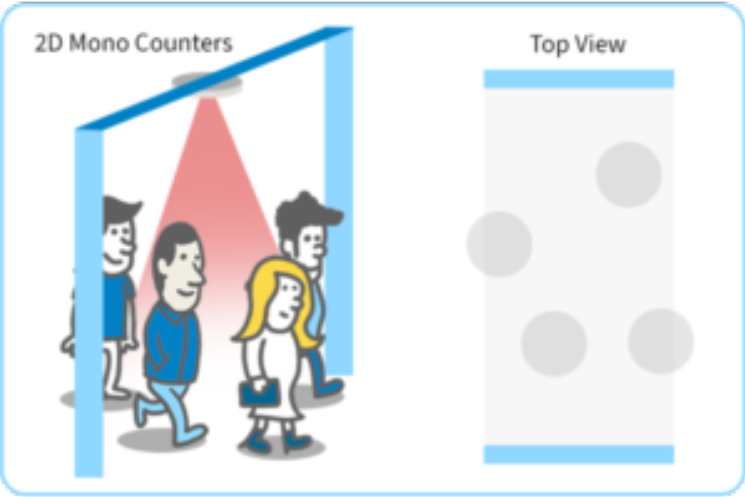
2D Mono counters – or monocular sensors – use a single camera lens for counting. Mono counters are installed top-down to detect moving objects only. The people counting algorithm digitally removes the static background and only tracks the moving objects.
Since mono counters lack vision depth, there is no smart object detection algorithm, and every moving object is counted. Modern 2D mono counters incorporate basic AI to filter some non-human objects, but they remain inaccurate in high-traffic areas, variable lighting, or environments with shadows, sunlight, crowded groups, baby carts, or children. They have a high field of view, making them suitable for low-traffic, well-lit settings.
The verdict: Mono counters are cost-effective and easy to install, but they provide inaccurate data that is dependent on the environment, limiting their use to low-traffic areas.
Wireless People Counters
Wireless people counters – also known as wifi people counters – vary in size but can be as large as a home router. Originally, they worked by detecting smartphones with Wi-Fi enabled, tracking MAC addresses. However, due to modern smartphone privacy features randomizing MAC addresses, their accuracy has significantly declined. Current wireless counters use alternative signals like Bluetooth or anonymized device detection, but they still require visitors to carry active devices and cannot count groups like families or non-device-carrying individuals. The signal range typically deviates at least 3-5 meters, causing the sensor to collect unnecessary or irrelevant data.
The verdict: Wi-Fi counters are best used as a secondary counter and not as a replacement for a primary people counting system, especially given their reduced reliability in modern settings.
Time-of-Flight Sensors
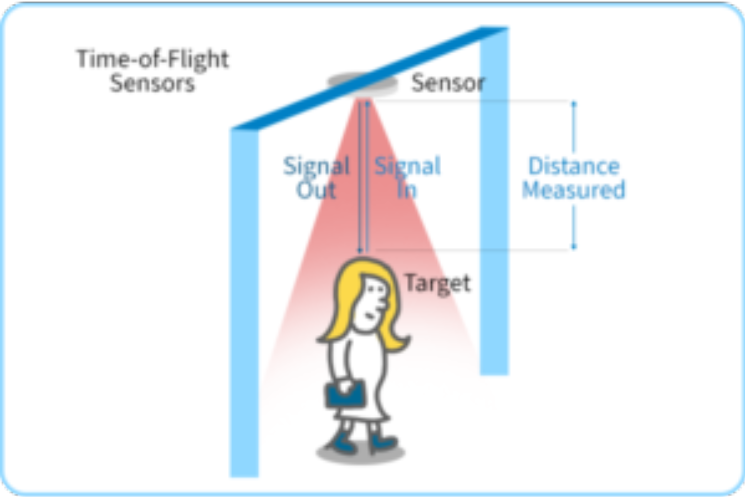
Time-of-Flight counters or ToF sensors are similar in size to thermal cameras. This counting method measures the time difference between a signal’s emission and its return to the sensor. ToF sensors work by sending a signal (ultrasound, infrared, or laser) to objects beneath the sensor, then recording the time needed for the signal to reach its origin, and finally registering a count from the time difference.
Since sunlight radiates the whole spectrum, it can significantly disrupt the processed signal. While recent ToF sensors have improved signal processing, accuracy still decreases as the distance between the object and sensor increases. The resolution remains low, leading to poor performance in crowded entrances where differentiating visitors from objects or children is challenging. ToF sensors can work in total darkness but require multiple sensors to cover wider areas, increasing costs.
The verdict: The data provided by time-of-flight sensors can be inaccurate. Additionally, the need for multiple sensors to cover a wider area makes this sensor technology a more expensive option.
3D Stereo People Counters
3D people counters use 3D Stereo Vision technology to detect and count people. 3D Stereo vision can be defined as the extraction of 3-dimensional information from images.
An analogy can be made between human vision and computer vision. In computer stereo vision, receptor units are cameras as opposed to human eyes. The same process applies: Two cameras capture two separate images. They are processed simultaneously and combined into one image to provide spatial depth information. Modern 3D stereo counters integrate AI algorithms to enhance object detection and filtering, improving accuracy to 95-98% in most conditions.
Tangent (for inline code)
Stereo people counters are installed top-down at any entry and exit points. 3D Stereo counters have vision depth, which allows the cameras to exclude objects that don’t meet the height requirements specified during the calibration process. The overall accuracy of stereo counters can vary from one system to another.
Stereo vision technology is not affected by radiating sunlight, shadows, or other environmental elements as previous people counting sensor technologies.
The verdict: 3D Video Sensors offer some distinct advantages over other forms of people counting sensor technologies. These sensors create 3D images for highly accurate people counting results.
3D Active Stereo Vision Counters
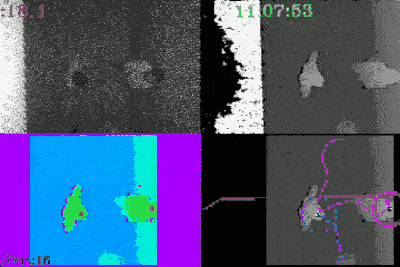
Active stereo vision mimics human vision similar to stereo vision. However, its enhanced module projects onto the monitored area to generate depth information in no light conditions. That way, it utilizes the 3d stereo vision benefits even when there is no light in the environment.
3D active stereo vision technology processes the combined images and creates depth maps to provide accurate and reliable counting, often achieving up to 99% accuracy with AI enhancements. Sensors are installed on the ceiling to monitor the entrance of the location.
In this example, we can see a sample location entrance with 3-dimensional depth information in no light conditions. The heads of the visitors are marked with a red circle. The algorithm tracks this circle. Counting occurs whenever it coincides with imaginary lines that are configured by V-Count support personnel.
Since objects are differentiated by their heights, objects located side by side can be counted correctly. This technology has a high field of view to cover the entire area, thus decreasing the customer’s total cost.
The verdict: 3D active stereo vision counters are the gold standard for precision, reliability, and adaptability across environments.
Conclusion
V-Count’s Nano, Nano Outdoor, Nano Prime, and BoostBI represent the pinnacle of people counting technology, offering unmatched accuracy, privacy compliance, and versatility. These solutions empower businesses to make data-driven decisions, optimize operations, and enhance customer experiences across indoor and outdoor environments. To learn more, visit v-count.com for a free demo.


